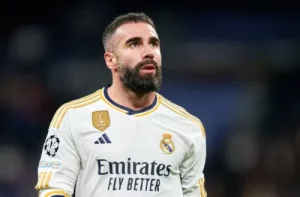
The International Ice Hockey Federation (IIHF) has recently announced the implementation of mandatory neck protectors for all hockey players participating in their sanctioned events. This decision comes as a proactive measure to enhance player safety and reduce the risk of serious neck injuries.
The neck protector, also known as a neck guard, is a piece of equipment designed to provide additional protection to the neck area. It is typically made of high-density foam or a combination of foam and plastic, providing a cushioning effect against impacts and reducing the likelihood of severe injuries.
The IIHF’s decision to make neck protectors mandatory follows a growing concern over the safety of hockey players, particularly in relation to neck injuries. While helmets and other protective gear have been mandatory for years, the neck area has remained relatively vulnerable. This new rule aims to address this gap and ensure that players are adequately protected during gameplay.
Neck injuries in hockey can occur due to various reasons, including collisions with other players, falls, or being struck by a puck or stick. These injuries can range from minor bruises and strains to more severe conditions such as concussions, fractures, or even spinal cord damage. By introducing mandatory neck protectors, the IIHF hopes to significantly reduce the occurrence and severity of such injuries.
The decision to implement mandatory neck protectors was not taken lightly. The IIHF conducted extensive research and consulted with experts in the field of sports medicine and player safety before making this ruling. They analyzed data from previous incidents and studied the effectiveness of neck protectors in preventing or minimizing injuries.
Several hockey leagues and organizations around the world have already adopted similar rules regarding neck protectors. The National Hockey League (NHL), for instance, made them mandatory for all players entering the league in 2013. This move has been widely praised for its positive impact on player safety.
While some players may initially find it uncomfortable or restrictive to wear neck protectors, it is crucial to prioritize their safety and well-being. The IIHF believes that the benefits of this new rule far outweigh any potential inconvenience. Players will have to adjust their equipment and get accustomed to the added layer of protection, but it is a small price to pay for reducing the risk of serious neck injuries.
The IIHF’s decision to implement mandatory neck protectors aligns with their ongoing commitment to player safety and welfare. By taking proactive measures and continuously improving safety standards, they aim to create a safer environment for hockey players at all levels of the game.
It is important to note that this rule applies only to IIHF-sanctioned events. However, it is expected that other hockey leagues and organizations will follow suit and adopt similar regulations in the near future. The introduction of mandatory neck protectors represents a significant step forward in ensuring the long-term health and safety of hockey players worldwide.

